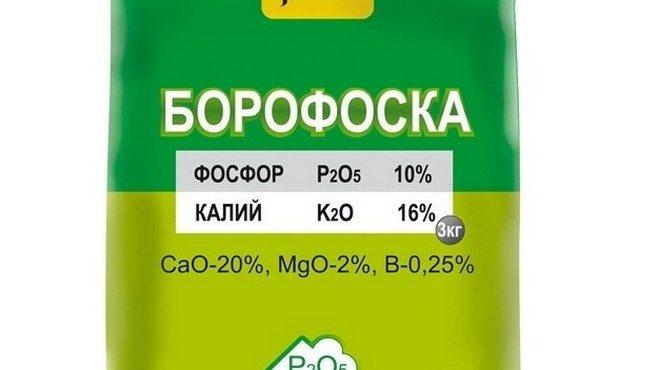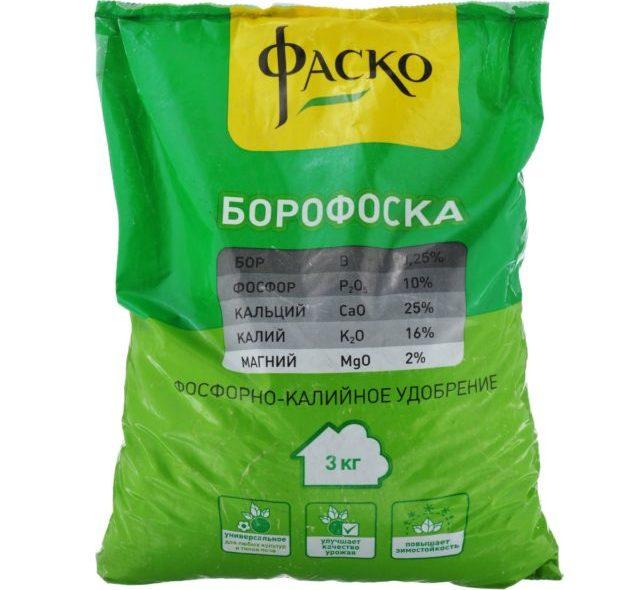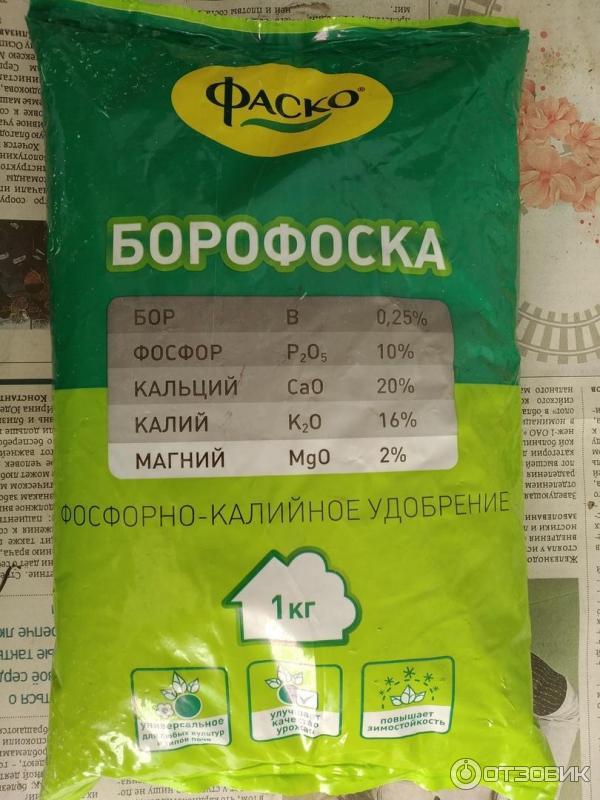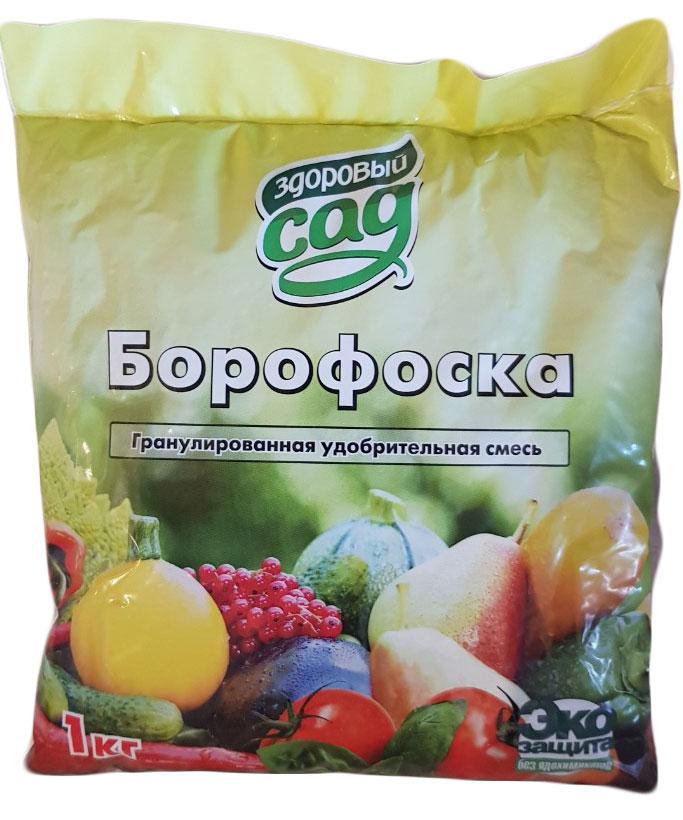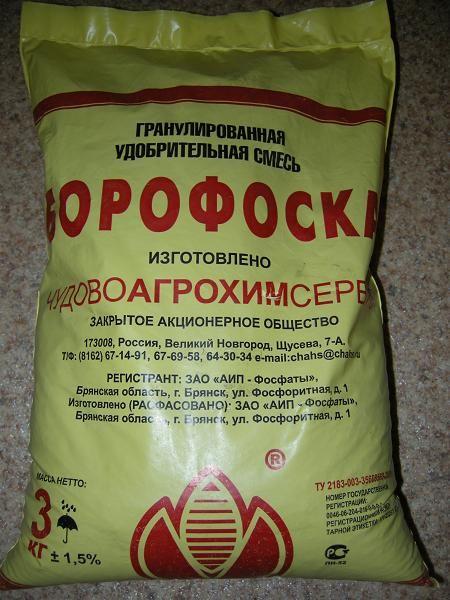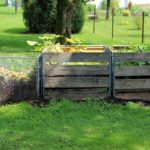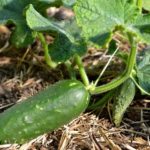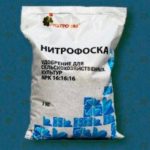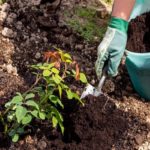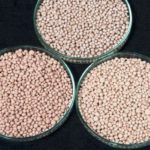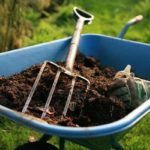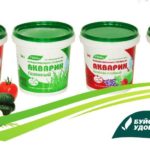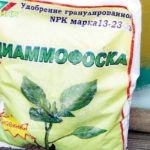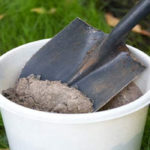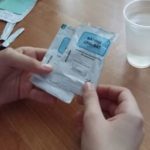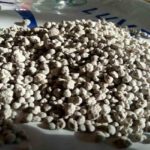During the entire growing period, plants require support with mineral fertilizers. You can use accessible and harmless formulations that are easy to use and contain elements necessary for the proper development of crops. Let's consider the use of "Borofoski", its composition, principle of action and purpose, advantages and disadvantages. How to use it as the main fertilizer and top dressing, for protection and prevention of diseases, when and how to apply it.
- Composition and release form of "Borofoski"
- Principle and scope
- Advantages and disadvantages
- Instructions for use
- As a basic fertilizer
- In the form of feeding
- For plant prevention and protection
- Deadlines for depositing
- in spring
- in autumn
- Precautionary measures
- Shelf life and storage conditions
- Analogues of the product
Composition and release form of "Borofoski"
The fertilizer is produced by “AIP-PHOSPHATES” in the form of small gray granules in soft sealed packaging of 1 kg. The composition contains no nitrogen, but contains phosphorus (10%), potassium (16%), calcium (25%), magnesium (2%) and boron (0.25%).
Principle and scope
The elements included in the Borofoski formula actively participate in the bioprocesses that occur in cultivated plants. In the garden it can be used throughout the entire growing season. The fertilizer is distinguished by correctly selected and balanced elements, thanks to which it nourishes plants, normalizes growth, increases soil fertility, increases productivity, and improves the quality of harvested fruits. Reduces the entry of nitrates and heavy metals into plant tissue. Accelerates the survival and rooting of seedlings and seedlings.
Fertilizing with “Borofoskaya” can be done on flowering and ornamental crops; this fertilizer is suitable for roses and other garden flowers, vegetables, fruit trees and berry plants.
Potassium normalizes water absorption, improves fluid transport throughout the plant, promotes the accumulation of starch and sugars in fruits and roots, enhances disease resistance, and increases stress resistance.
Phosphorus in Borofoska is in the form of carbonate; this form prevents it from being washed out of the soil. Phosphorus increases yield, positively affecting productivity, enhances the growth of roots, buds and flowers.Calcium helps plants develop fully and bloom profusely. Boron is a stimulator of growth, flowering, and pollen formation; its entry into plants is most important during the flowering and fruiting period.
Fertilizer can be used at any stage of cultivation, starting with seedlings. Despite the fact that it must be dosed correctly, a slight overconsumption is not a big deal. Plants will take from the soil as many nutrients as they need at the moment.
Advantages and disadvantages
Advantages and feasibility of using “Borofoski” in the garden:
- the composition includes phosphorus and potassium - the most important nutritional elements, as well as equally important calcium, magnesium and boron;
- elements are presented in an easily digestible form;
- no chlorine;
- does not remain in the soil;
- acidifies the soil, so can be used on alkaline soils;
- supports plants during their active growing season.
Cons: due to the acidic reaction, it is not recommended for use on acidic soils.
Instructions for use
“Borofoska” is used as the main fertilizer, that is, during soil preparation and planting, for feeding throughout the season, and also as a means of preventing the deficiency of microelements in the soil and in plant nutrition.
As a basic fertilizer
When preparing beds and digging, Borofoska fertilizer is applied in spring or autumn. The granules are embedded in the soil to a depth of 10 cm so that they are located at the level of the root system. For 1 sq. m, 60 g are applied. 70 g are applied to vegetable beds, 100 g for flowers and ornamental crops, and 50-80 g for trees and shrubs.
In the form of feeding
When feeding crops, granules are added dry to the soil or dissolved in water and the beds are watered. Dosage – 2 tbsp. l. for 10 l.The frequency of fertilizing depends on the condition of the plants, but usually this fertilizer is applied before flowering and throughout the entire fruiting period.
For plant prevention and protection
“Borofoska”, due to its boron content, can be used to prevent boron deficiency and the diseases that arise as a result. This is expressed in the death of growing points and new shoots, a decrease in the number of buds and flowers, the falling of already set fruits, and the development of rot in vegetables and root crops. For prevention on soils poor in this element, “Borofoska” is applied as the main and preferred fertilizer, in doses recommended by the manufacturer.
Deadlines for depositing
Like other fertilizers, Borofosk must not only be dosed correctly, but also applied in a timely manner. Then the benefit from it will be maximum.
in spring
Soil preparation in the spring is carried out after the snow has melted and it has dried out a little. The soil should warm up, but not dry out. The granules are scattered over the dug up beds, after which they are buried to a shallow depth with a rake. In spring, it is recommended to apply fertilizer on light sandy soils.
in autumn
The scheme for using the Borofoska fertilizer in the fall is the same as in the spring. The granules are added to the dug up soil and covered. The time for autumn application comes after the end of the growing season and harvesting. If you need to plant shrubs or trees in the fall, then prepare the area for them about 2 weeks before planting. In autumn, fertilizer is used mainly on heavy clay soils.
Precautionary measures
"Borofoska" is not toxic to humans, animals, and bees. But may irritate the skin upon contact with granules or solution.Therefore, for safety, you need to wear rubber household gloves and do not take them off until the end of the work. After completing application, wash your hands and face with soap. Any solution that gets on your skin or eyes should be washed off with clean water.
Shelf life and storage conditions
"Borofoska" can be stored for 2 years, provided that all conditions are met. Granules must be protected from moisture and sunlight; to do this, they must be stored in tightly sealed original bags. Do not store food, household products, medicines or animal feed nearby. If you need to prepare a solution, then you should dissolve as many granules as needed for watering in 1 day. The solution can only be stored for 1 day.
Analogues of the product
On a personal farm, “Borofoska” can be replaced with phosphorus-potassium fertilizers: potassium monophosphate, “YaraTera KRISTA MKP”, “Good Host”, “Granfoska”, “Atlante” and others.
“Borofoska” contains not only phosphorus and potassium, but also magnesium and boron in quite large quantities. Therefore, it can serve to nourish plants and prevent the lack of these microelements in the soil. In this way, it is possible to normalize the supply of boron to plants, prevent the development of diseases, activate flowering and improve fruit set. The microelement improves the quality of the harvest, makes it tastier, it is stored longer, and the percentage of fruits affected by rot is reduced.

